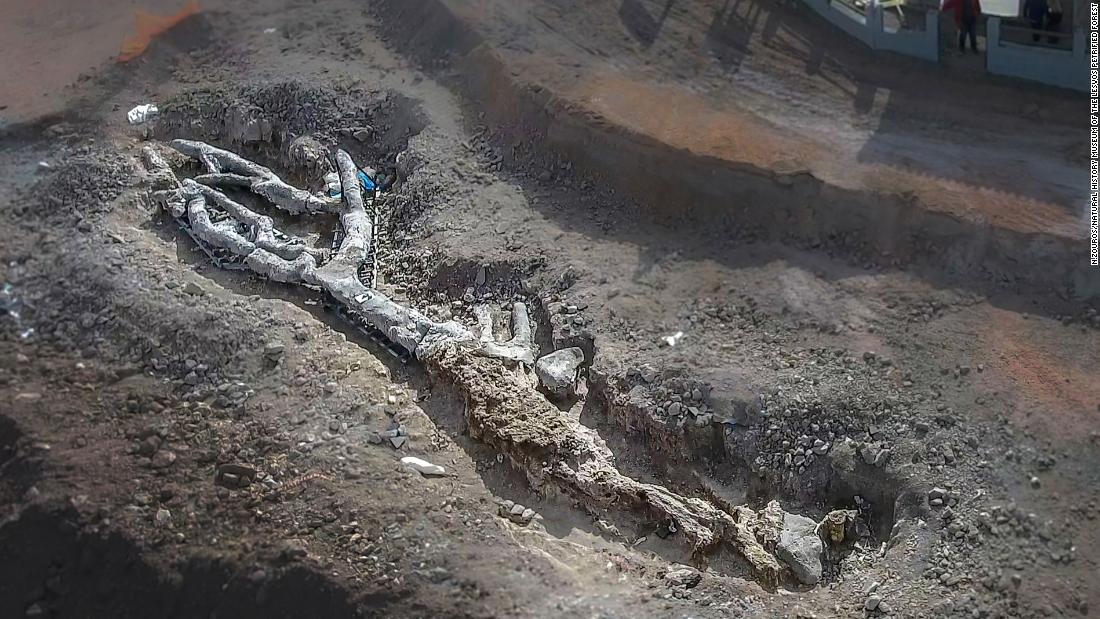The Petrified Lesbos Forest was formed 20 million years ago, when a volcano exploded in the north of the island, covering the entire area with ash and lava. The area, which extends over 15,000 hectares, is known for its fossilized trunks of bright and colorful colors.
Nickolas Zouros, professor of geology at the University of the Aegean, was excavating the fossilized forest ecosystem, but told CNN that he had never discovered such a discovery.
“We have many discoveries over the years, but the most recent ones are the most important – really extraordinary,” he told CNN on Thursday.
Experts discovered the huge tree, measuring 19.6 meters (21.4 yards) – complete with branches and root system – during an excavation along the Kalloni-Sigri highway.
“This is not often found in excavations,” said Zouros. “We usually find logs without branches and roots.
“It is the only one found in the excavation with the branches, the root system, and it was found in a layer full of leaves – we have all the organs of the tree in the regional system. This is unique so far – we have been digging for 25 years and have never found a tree like this, “he said.
Conifers, fruit trees, redwoods, pine, palm, cinnamon and oak trees are among the specimens discovered in the petrified forest.
“These trees show that the climate has changed in the Lesbos region – this tree is subtropical. Climatic conditions were subtropical 20 million years ago when the tree was destroyed by volcanic eruptions. Nowadays studying this flora – the petrified forest – – we can have an idea of how climate changes affect the ecosystem “, said Zouros.
Zouros told CNN that vegetation records showed that half of the species found on the island had died.
“They would not survive climate change,” he said. “This is important information that we can use to explain to visitors that climate change has serious consequences for the species that live here, for modern ecosystems.”
In addition to the “extraordinary” tree, experts discovered more than 150 logs at another location, about 200 kilometers (124 miles) from where the entire tree was discovered.
“Professor Zouros’ new discoveries are impressive,” Chronis Tzedakis, a professor of physical geography at University College London who is not associated with the excavation, told CNN.
“Recovering a tree with its branches, roots and leaves still attached is extremely rare, while 150 logs recovered together will provide a unique snapshot of a point in time that will allow us to assess the ecosystem’s biodiversity.”
Tzedakis added: “More generally, although there are several petrified forests around the world, Sigri is exceptional because several trees are found in their original position, with their root systems intact. This provides a rare glimpse of a Miocene forest, in terms of size and density. “
The excavation during which the tree was found was completed in January, said Zouros.
